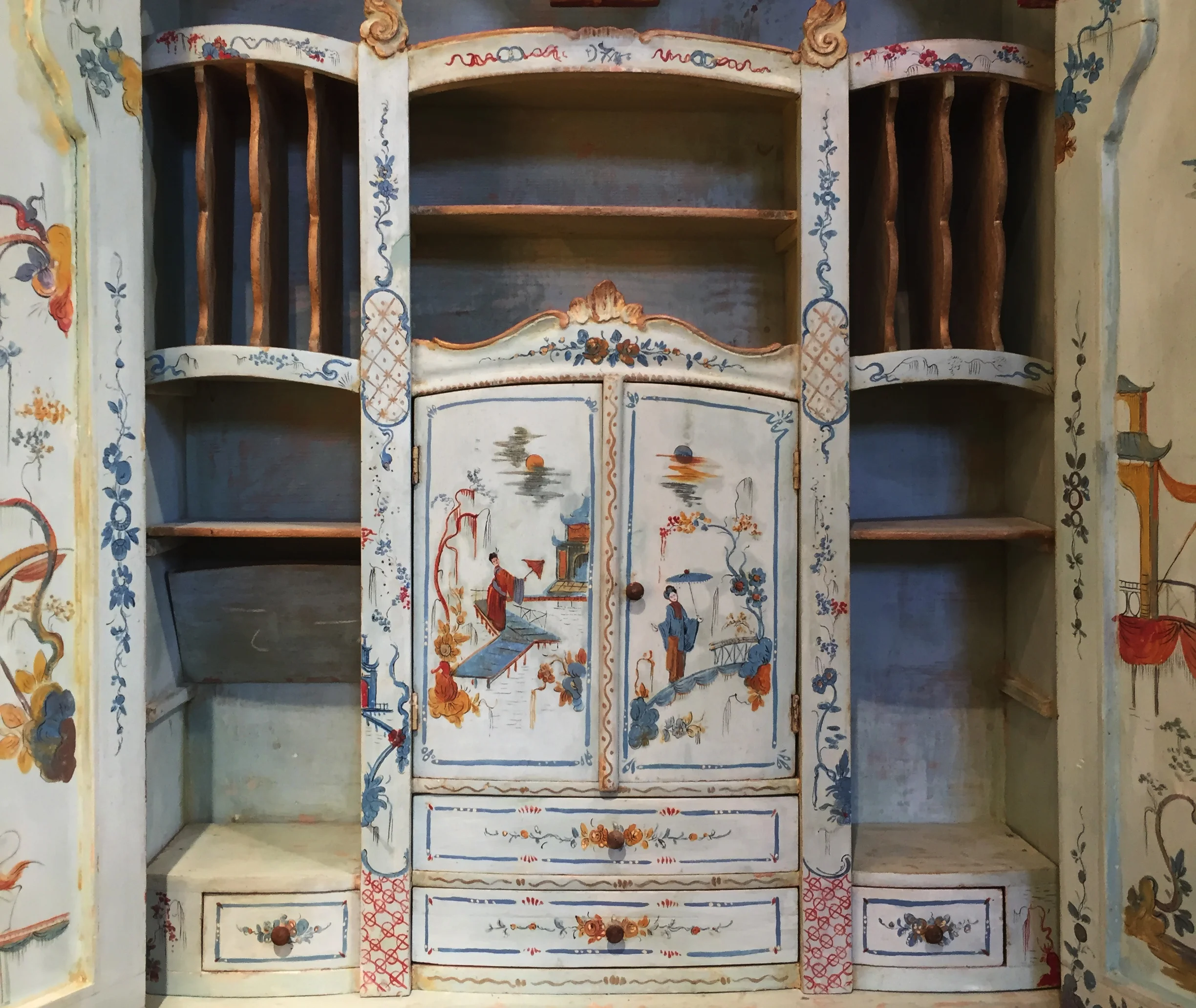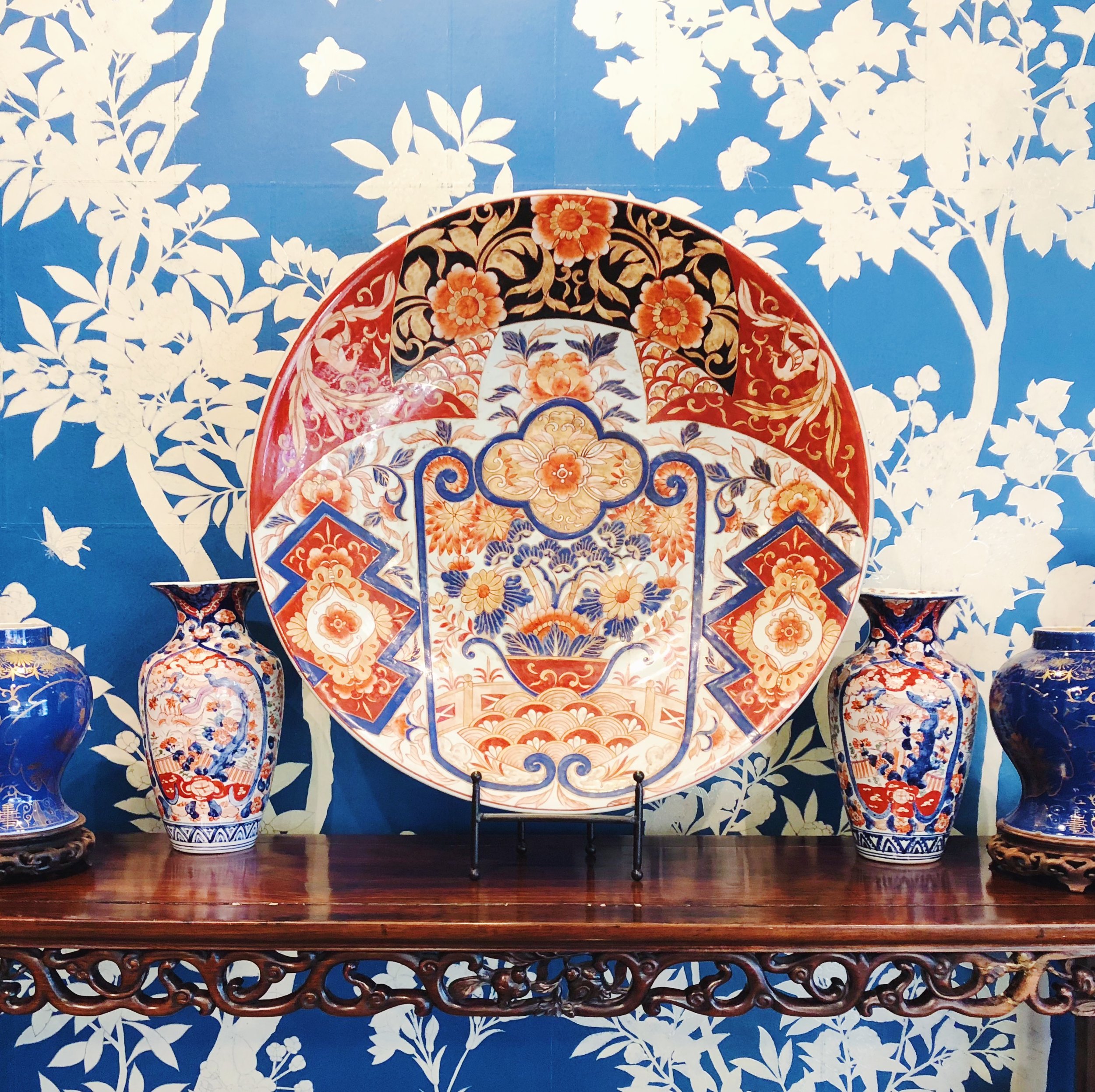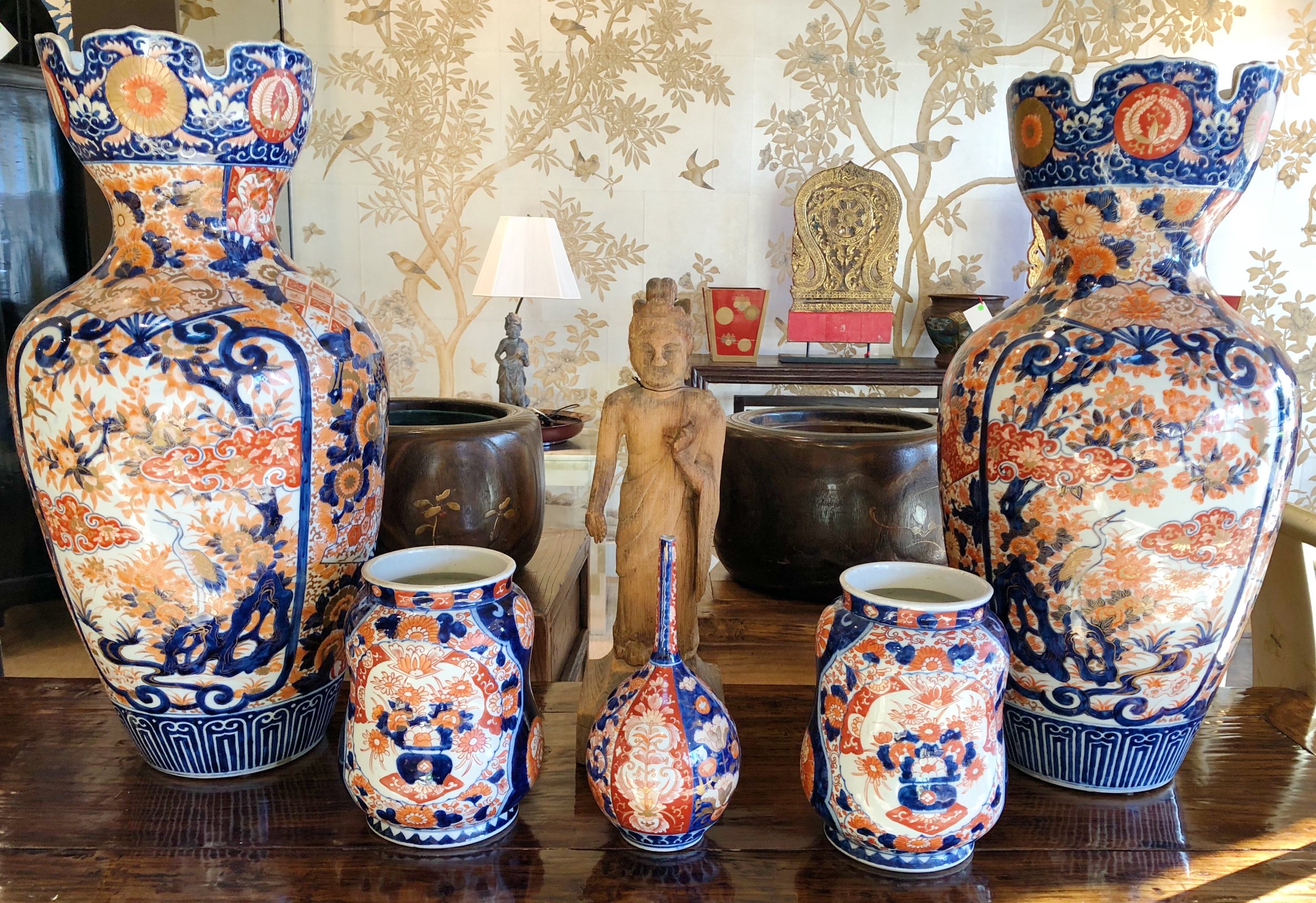A soothing color palette helps to soften the rough, organic textures we used in this Cape Cod style bedroom in Dallas.
With travel restrictions in place due to COVID-19, many Dallas homeowners are wanting to surround themselves with memories of their time abroad. This may be why travel-inspired interior design is one of 2021’s trending looks.
Interior designers like myself often have our own favorite travel destinations and multicultural design influences. Over the course of my design career, I’ve been to Europe twelve times. I’ve also found inspiration in my travels to China, Mexico, and Canada. My business partner, Lea Barfield, and I own an antique buying trip business called Tour Décor, which helps our clients source European pieces for their residences.
When I take on a new design job, I enjoy finding ways to incorporate any antiques or multicultural art that my clients have collected over the years. Below, you’ll find some design tips and tricks for highlighting travel mementos in a sophisticated way.
Getting Started
Pictured is a collection of African milk bowls that we selected for our clients, displayed together on a kitchen wall.
One way to begin is by picking out a single piece you acquired abroad and using it as a touchpoint for the rest of the room. Putting together a collection of art from a place you’ve visited, or a gallery wall of travel photos, is another great way to memorialize.
If you’re an experienced traveler with many favorite destinations, you may have trouble narrowing down which styles to incorporate into your home. When in doubt, stick with what will complement your home’s architecture. In a midcentury modern home, you can easily blend in African, Indian, or East Asian accessories. However, if you own a home with Italian, French, or English architectural elements, you should probably stick with European furnishings and art.
If your room is coastal-themed, you can include touches of nautical whimsy, like this mirror with a rope frame.
Sourcing New Pieces
A travel-inspired home will naturally evolve over time as you bring home more treasures over the years. Make sure to leave some open space on your wall or floor for new pieces you acquire in the future.
If your favorite places in the world have lots of historic buildings, your travel-inspired room should have a sense of history, too. You can browse local antique shops in Dallas for fine, old antiques. The internet (especially social media like Instagram) can also be a great way to discover and commission artisans around the world.
Using world maps (whether printed and framed or used as a pattern in an unexpected place) is another way to communicate a feeling of wanderlust to guests. On the same note, globes are a great accessory for masculine studies and libraries.
Layering Your Space
Although a gallery wall makes a great focal point, don’t stop there. It’s important to make sure your room looks like a living space and not a museum. The solution is to spread your pieces throughout the space instead of isolating them to one part of the room.
This formal living room is Asian and Indian influenced, with its foo dog statue, incense burner, and Indian patterns.
For some clients, it’s not about a specific object they acquired, but a feeling they want to recreate. Reference your travel photos to help you get closer to the ambiance you want and identify the colors you associate with that place.
If you’re not sure what will be complementary with your travel-inspired elements, go with safe bets. Place your colorful textiles against a neutral backdrop of tan, cream, or grey. It’s also helpful to remember that natural materials like wood furniture can fit into almost any design setting. For a truly immersive feeling, try using scented candles, incense, or houseplants associated with the region you’re inspired by in the room.
Don’t forget to do some research too, especially if it’s been a while since you visited the country in question. Doing research on the history and significance of certain design traditions is not only interesting and educational, but will also help you learn how to incorporate these inspirations in a tasteful and respectful way.
Earth tones and African art make for a perfect combination in this Kessler Park guest bedroom.
There’s no better time than now to learn how to capitalize on the photos and art you’ve collected from your travels and weave a design narrative around them. That said, some people, especially those who are moving into a new home, may find the prospect overwhelming. If this sounds like you, you can reach out to us by sending an email to info@chambersinteriors.com or calling our Dallas office at 214-232-9501. When it comes to editing down your collections, having a professional second opinion is invaluable.
RELATED ARTICLES:


























